Tetracycline hydrochloride
Synonym(s):Tetracycline, Hydrochloride - CAS 64-75-5 - Calbiochem
- CAS NO.:64-75-5
- Empirical Formula: C22H25ClN2O8
- Molecular Weight: 480.9
- MDL number: MFCD00078142
- EINECS: 200-593-8
- SAFETY DATA SHEET (SDS)
- Update Date: 2025-02-07 17:39:10
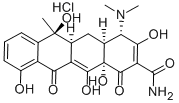
What is Tetracycline hydrochloride?
Description
Tetracycline is a broad-
Chemical properties
Yellow crystalline powder
The Uses of Tetracycline hydrochloride
Tetracycline hydrochloride is a salt prepared from tetracycline taking advantage of the basic dimethylamino group which protonates and readily forms the salt in hydrochloric acid solutions. The hydrochloride is the preferred formulation for pharmaceutical applications. Tetracycline hydrochloride has broad spectrum antibacterial and antiprotozoan activity and acts by binding to the 30S and 50S ribosomal sub-unit,s blocking protein synthesis.
The Uses of Tetracycline hydrochloride
Antibiotic substance produced by Streptomyces spp. Antiamebic; antibacterial; antirickettsial.
The Uses of Tetracycline hydrochloride
Tetracycline hydrochloride is used to induce apoptosis in osteoclasts. It is used to treat acne and other skin infections, respiratory tract infections like pneumonia, genital, urinary infections, leptospirosis, helicobacter pylori, taxoplasmosis, mycoplasma, psittacosis for dog and cats. It also works more effectively in animals that have tick-borne infections. It is also useful in cell culture applications.
Mechanism of action
Tetracycline Hydrochloride is an antibiotic active against a wide range of gram-negative and gram-positive bacteria. The tetracyclines exert their antibiotic effect primarily by binding to the bacterial ribosome and halting protein synthesis. Upon binding the ribosome, the tetracyclines allosterically inhibit binding of the amino acyl-tRNA at the acceptor site, and protein synthesis ceases.
Dosage
The usual daily dose of Sumycin for adults is 500 mg twice/day or 250 mg four times/day for mild to moderate infections; higher doses may be required for severe infections. For children above eight years of age, usual daily dose of Sumycin is 10 to 20 mg/lb (25 to 50 mg/kg) body weight divided in four equal doses.
General Description
Crystals or fine bright yellow powder. pH of 2% aqueous solution: 2.1 - 2.3.
Air & Water Reactions
Water soluble.
Reactivity Profile
Tetracycline hydrochloride is acidic. Reacts with strong oxidizing agents .
Fire Hazard
Flash point data concerning Tetracycline hydrochloride are not available, however, Tetracycline hydrochloride is probably combustible.
Biochem/physiol Actions
Primary Targetbinding of aminoacyl tRNA to the A-site of ribosomes
Safety Profile
Poison by intraperitoneal and intravenous routes. Moderately toxic by ingestion and subcutaneous routes. Human systemic effects: change in taste function. An experimental teratogen. Experimental reproductive effects. Mutation data reported. When heated to decomposition it emits very toxic fumes of HCl and NOx. See also TETRACYCLINE.
Veterinary Drugs and Treatments
While tetracycline still is used as an antimicrobial, most small animal clinicians prefer doxycycline and large animal clinicians prefer oxytetracycline when a tetracycline is indicated to treat susceptible infections. The most common use of tetracycline HCl today is in combination with niacinamide for the treatment of certain immune- mediated skin conditions in dogs, such as pemphigus.
Side Effects
Common side effects of Sumycin include:
nausea,
vomiting,
diarrhea,
stomach upset,
loss of appetite,
white patches or sores inside your mouth or on your lips,
swollen tongue,
black hairy tongue,
sore throat,
trouble swallowing,
dizziness,
headache,
sores or swelling in your rectal or genital area, or
vaginal itching or discharge.
Purification Methods
The hydrochloride is recrystallised from MeOH/n-BuOH or n-BuOH/HCl. It is insoluble in Et2O and pet ether. It has UV max at 270 and 366nm in MeOH. [Gottstein et al. J Am Chem Soc 81 1198 1959, Conover et al. J Am Chem Soc 84 3222 1962, Stephen et al. J Am Chem Soc 78 4155 1956, Beilstein 14 IV 2627.]
Properties of Tetracycline hydrochloride
| Melting point: | 220-223 °C(lit.) |
| alpha | -252 º (c=0.5, H2O) |
| refractive index | -253 ° (C=0.5, 0.1mol/L HCl) |
| storage temp. | Keep in dark place,Inert atmosphere,Store in freezer, under -20°C |
| solubility | H2O: 10 mg/mL as a stock solution. Stock solutions should be filtered sterilized and stored at −20°C. Stable at 37°C for 4 days. |
| form | powder |
| color | faint yellow to yellow |
| PH | pH(10g/l, 25℃) : 1.8~3.0 |
| optical activity | [α]/D -255 to 240° (Specific rotation ) |
| Water Solubility | 50 g/L |
| Sensitive | Air & Light Sensitive |
| Merck | 14,9196 |
| BRN | 3844873 |
| Stability: | Stable. Incompatible with strong oxidizing agents. |
| CAS DataBase Reference | 64-75-5(CAS DataBase Reference) |
| EPA Substance Registry System | Tetracycline hydrochloride (64-75-5) |
Safety information for Tetracycline hydrochloride
| Signal word | Warning |
| Pictogram(s) |
 Exclamation Mark Irritant GHS07  Health Hazard GHS08  Environment GHS09 |
| GHS Hazard Statements |
H315:Skin corrosion/irritation H319:Serious eye damage/eye irritation H335:Specific target organ toxicity, single exposure;Respiratory tract irritation H410:Hazardous to the aquatic environment, long-term hazard |
| Precautionary Statement Codes |
P202:Do not handle until all safety precautions have been read and understood. P261:Avoid breathing dust/fume/gas/mist/vapours/spray. P273:Avoid release to the environment. P302+P352:IF ON SKIN: wash with plenty of soap and water. P305+P351+P338:IF IN EYES: Rinse cautiously with water for several minutes. Remove contact lenses, if present and easy to do. Continuerinsing. P308+P313:IF exposed or concerned: Get medical advice/attention. |
Computed Descriptors for Tetracycline hydrochloride
| InChIKey | XMEVHPAGJVLHIG-FMZCEJRJSA-N |
Tetracycline hydrochloride manufacturer
Anand Agencies
Attar Global
New Products
1-Amino-1-cyclohexanecarboxylic acid Cycloleucine 6-Bromo-3-iodo-1-methyl-1H-indazole 3-(2,4-Dimethoxybenzyl)dihydropyrimidine-2,4(1H,3H)-dione 7-Bromo-1H-indazole ELECTROLYTIC IRON POWDER 2-Methyl-2-phenylpropyl acetate 1-Aminocyclobutanecarboxylic acid 1-(2-Ethoxyethyl)-2-(piperidin-4-yl)-1H-benzo[d]imidazole hydrochloride Decanonitrile tert-butyl 4-(1H-benzo[d]iMidazol-2-yl)piperidine-1-carboxylate 4-Ethylbenzylamine Methyl 5-bromo-2-chloro-3-nitrobenzoate N-(5-Amino-2-methylphenyl)acetamide 2-Chloro-3-nitropyridine 5-Bromo-2,3-dimethoxypyridine methyl 6-chloro-2-(chloromethyl)nicotinate 2-methoxy-4-methyl-5-nitro pyridine 2-iodo-5-bromo pyridine 2-amino-4-methyl-5-nitro pyridine 5-Fluoro-2-Oxindole methyl L-alaninate hydrochloride diethyl L-glutamate hydrochloride Ethyl tosylcarbamateRelated products of tetrahydrofuran


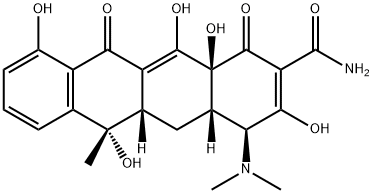
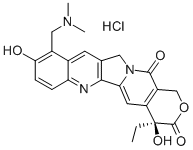


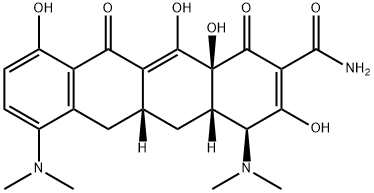

You may like
-
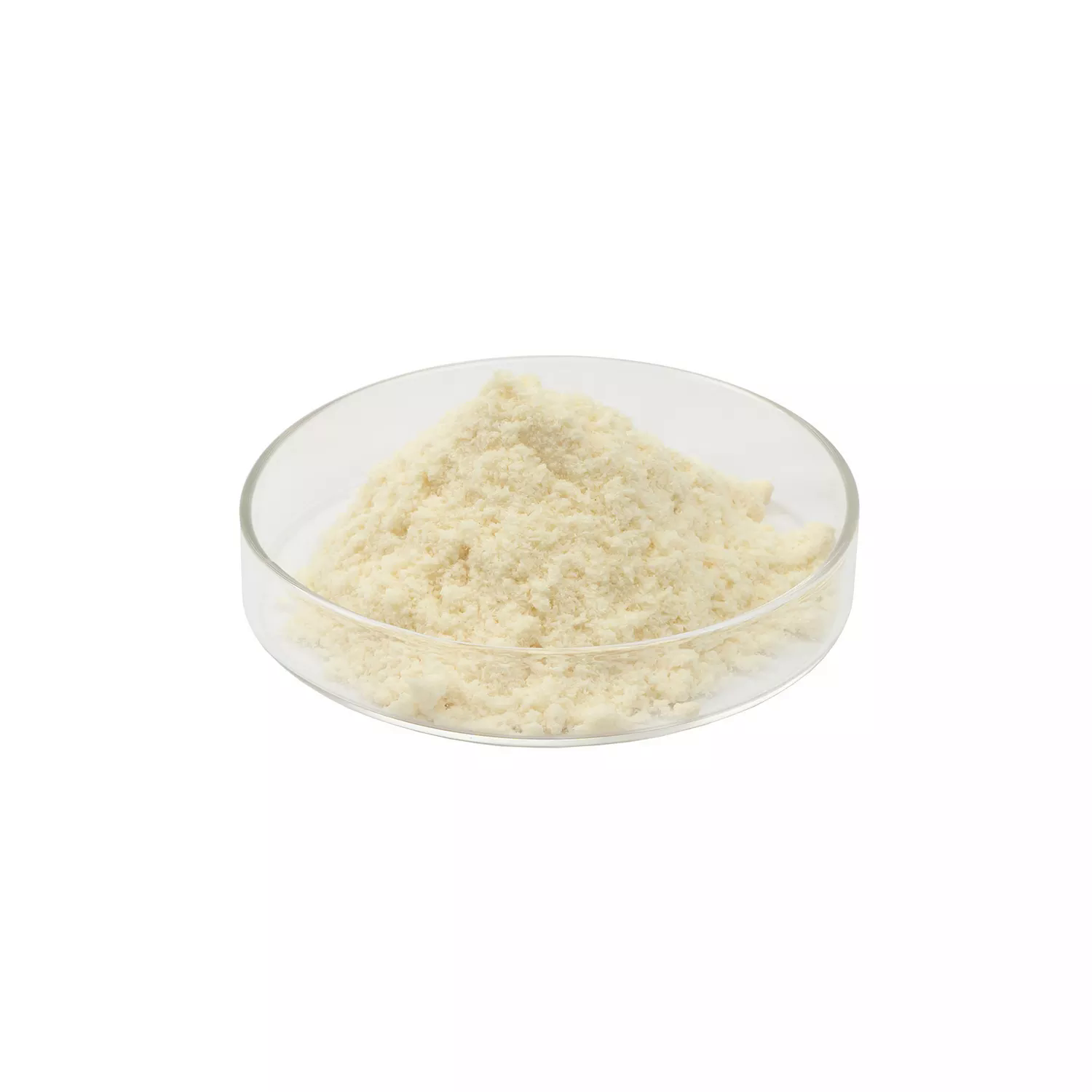 Tetracycline HCL 99%View Details
Tetracycline HCL 99%View Details -
 Tetracycline hydrochloride, suitable for cell culture CAS 64-75-5View Details
Tetracycline hydrochloride, suitable for cell culture CAS 64-75-5View Details
64-75-5 -
 Tetracycline Hydrochloride (TC) CAS 64-75-5View Details
Tetracycline Hydrochloride (TC) CAS 64-75-5View Details
64-75-5 -
 Tetracycline hydrochloride 97% CAS 64-75-5View Details
Tetracycline hydrochloride 97% CAS 64-75-5View Details
64-75-5 -
 Tetracycline hydrochloride CAS 64-75-5View Details
Tetracycline hydrochloride CAS 64-75-5View Details
64-75-5 -
 Tetracycline Hydrochloride CAS 64-75-5View Details
Tetracycline Hydrochloride CAS 64-75-5View Details
64-75-5 -
 Tetracycline Hydrochloride (TC) for tissue culture CAS 64-75-5View Details
Tetracycline Hydrochloride (TC) for tissue culture CAS 64-75-5View Details
64-75-5 -
 Tetracycline hydrochloride CAS 64-75-5View Details
Tetracycline hydrochloride CAS 64-75-5View Details
64-75-5